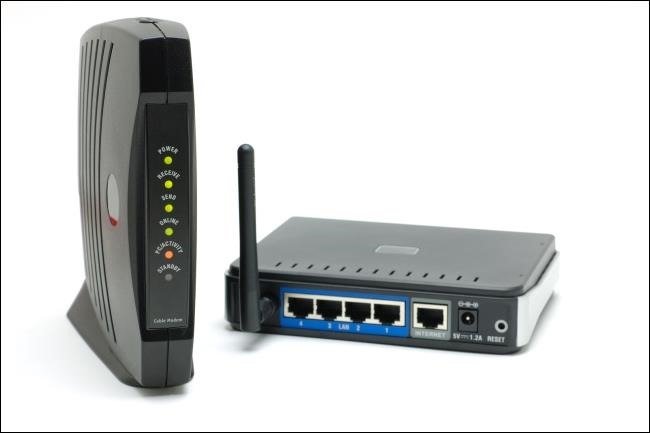If you are someone who has a basic understanding of computers and internet connectivity then you might have heard of the term ‘modem’. Normally it is commonplace for people to just know that a modem is part of the internet connectivity architecture. What a modem is and what it does are mostly things that are alien to most people despite them knowing there is such a thing called a modem. In this article we shall talk about what a modem is and we will discuss the different types of modems. Once you are through with this article you would have acquired new vital knowledge.
Table of Contents
What Is A Modem?
For you to understand the different types of modems, you should know the definition of a modem. The term ‘modem’ is a compound word for modulator demodulator. A modem is both an input and output device as it is used for sending and receiving information and data over telephone lines. Before we get into explaining that let us look at some base knowledge. Internet connectivity can be achieved through the use of various methods e.g. fibre-optic cables, coaxial cables, and telephone lines for instance. When we are talking about modems then it becomes apparent we are dealing with telephone lines. Understand that in the transmission of data there are analogue or digital signals involved. A computer recognises digital language or signals whereas a telephone line recognises analogue signals.
Picture a scenario where there is a computer on this end and another computer on the other end. You then want to establish an internet connection between the two computers using a telephone line. That is where a modem comes in. On either ends there would be a modem connected to the computer and the telephone line. Suppose a message is sent from one end, it is digital initially and then the modem converts it to an analogue signal. This will be to make it possible to move along the telephone line and when it reaches the other end it is converted back to a digital signal that the other computer can recognize. That is what a modem is all about, modulation (digital to analogue) and demodulation (analogue to digital) of signals in internet connectivity.
Let us now get into the different types of modems.
Classification Of Modems
Classifying modems depends on the basis of the classification. You can classify them based on characteristics of their built, transmission mode, number of connection lines or directional protocols.
Modem types based on Transmission Mode
Synchronous Or Asynchronous Modems
Synchronous modems support continuous flow when data bits are being sent. That does not eliminate the need for a clock signal. That is unlike asynchronous modems that work using a framework of start and stop bits. For synchronous modems there is no need for start and stop bits because the clock is always in synch with the data bits. This is made possible because the data bits can simply use the computer’s clock. That same clock is what the modem can also work based on. For asynchronous modems there is no clock signal between the computer and modem. Instead, for data transmission there is a repetitious synchronization process that is based on the initial pulse. So these are the different types of modems based on transmission mode.
Modem types based on Characteristics Of Its Built
External, Combo Or Integrated Modems
There are different types of modems based on how its built. An external modem is one that normally does not have a router. It stands on its own and can possibly be connected to a computer using a USB connection or an Ethernet cable. In the event that you want to incorporate several other computers it can be connected to a separate router. The combo one is a modem inside a router. This makes it possible for several computers to connect to one internet connection. The integrated modem is one that comes built in a computer. With that one it means just that one computer can connect to the internet.
Types of Modems Based on Method Of Connectivity
Modem types can be categorized by the method used to connect to the internet. There are cable modems, fibre modems, dial-up modems, or digital subscriber line (DSL) modems amongst others. DSL modems are one of the most preferable because they carry data at very high speeds. Fibre modems are also preferable given one’s specific needs. Usually the choice here on method of connectivity is informed by download speeds attainable, amongst other factors.
Types of Modems Based on Directional Protocols
Half Duplex Modem Or Full Duplex Modem
This is a modem that only allows data transmission in one direction at a particular time. When data is sent from one end there is a protocol mechanism that springs to action. There is a control signal that is generated and communicated to the end that is receiving. That signal will be to dissuade any data transmission given that the other end will already be sending something. As for the full duplex, data transmission can be simultaneously done either way at the same time. This is apparently faster than a half duplex modem. So these types of modems are different because of different directional protocols.
Types of Modems Based on Number Of Connection Lines
2 Wire Or 4 Wire Modems
If a modem has a 2 wire mechanism it means that both wires can be for outgoing data and incoming data. As for the 4 wire one, 2 will be for outgoing data and 2 will be for incoming data. Earlier we spoke about directional protocols – they happen to be closely related to connection lines. A 2 wire modem is usually best suited as a half duplex modem. A 4 wire modem can be used as either a half duplex modem or a full duplex one.
So that is it about the different types of modems. Apparently you can feel that the details are quite technical. Nevertheless, when people are looking to get modems they can forego those techy details and look at laymen ones. Things like download speed, methods of connectivity, amongst others are usually inclusive of all the other intricate details. Thus, for instance, considering connection or download speeds and methods of connectivity can lead one to make the right choice.





